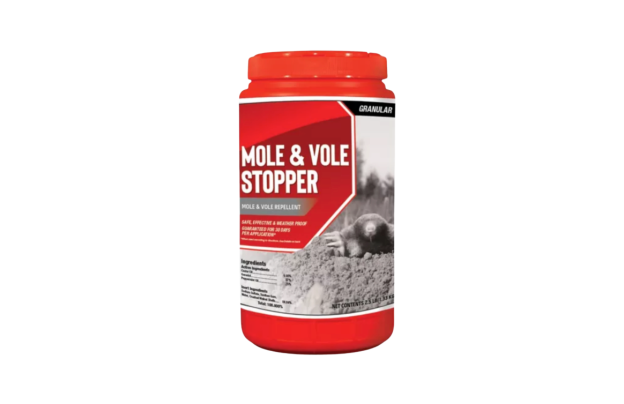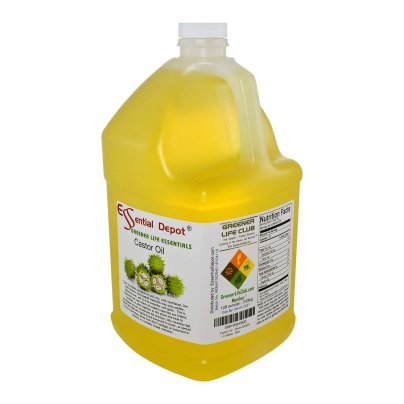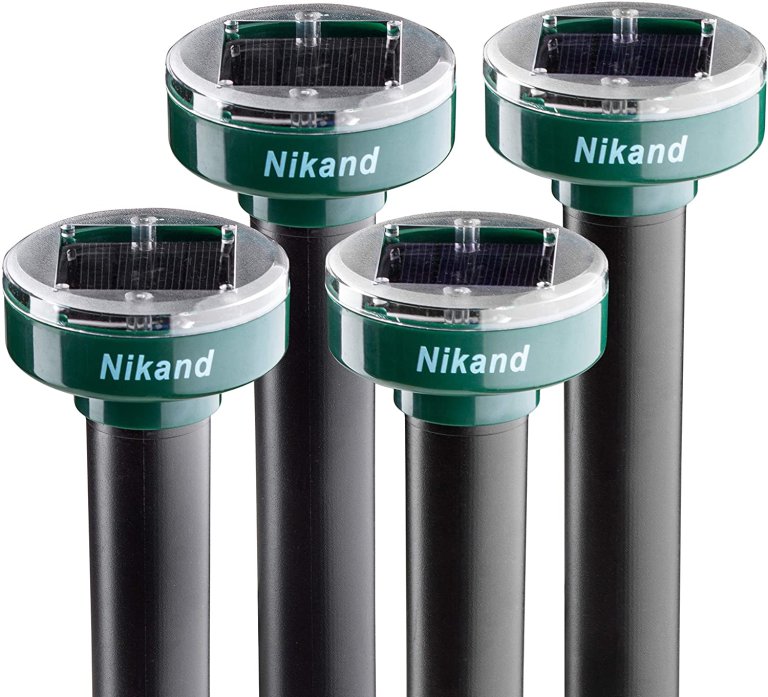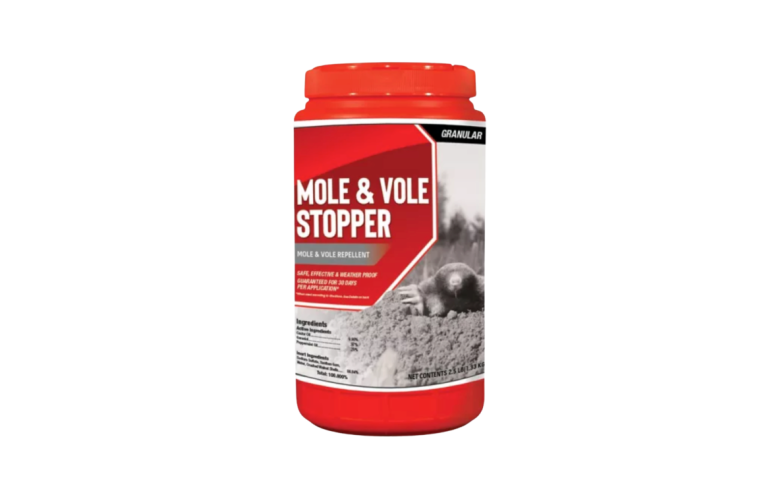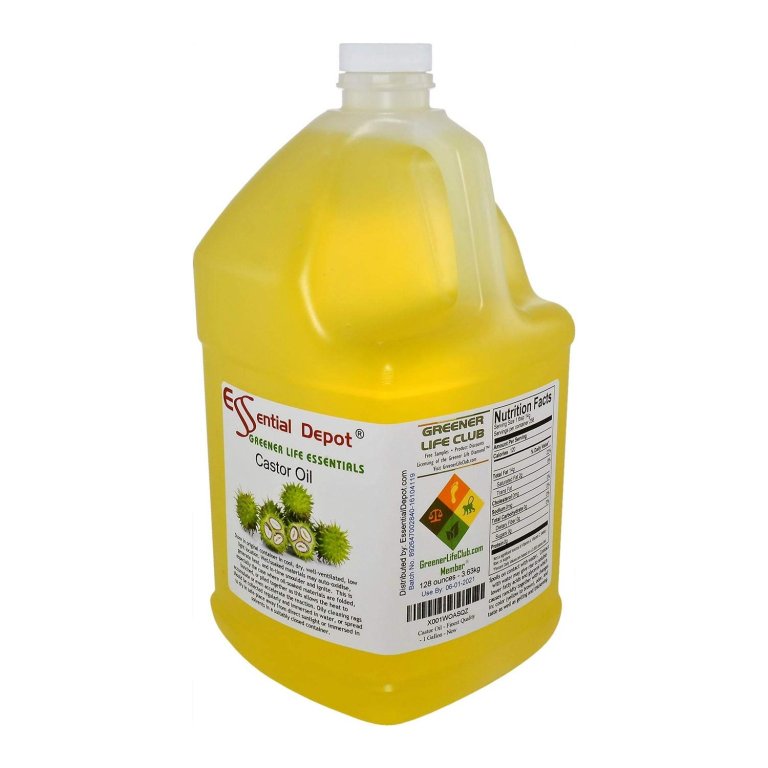
We may earn revenue from the products available on this page and participate in affiliate programs. Learn More ›
Moles can be a difficult pest to get rid of once they establish themselves in your yard. Repellent for moles and other wildlife comes in many forms, including natural, chemical, and ultrasonic. These products can emit irritating sounds, vibrations, odors, and can even affect the taste of the moles’ food source in order to repel these pests.
Our favorite mole repellent is the Nikand Ultrasonic Mole Repellent Stakes. Each stake covers a relatively wide range of 7,500 square feet. The repellent also works on gophers, shrews, and voles in addition to moles. The best mole repellent for you might not be suitable for the next person, so it’s important to make an educated decision on a product to ensure that your pest treatment is a success. Read on for some more of the best mole repellents available in their respective categories.
- BEST OVERALL: Nikand Ultrasonic Mole Repellent Stakes
↓ Jump to Review - BEST BANG FOR THE BUCK: Animal Stoppers Mole and Vole Repellent
↓ Jump to Review - BEST NATURAL: Essential Depot Food-Grade Pure Castor Oil
↓ Jump to Review - BEST GRANULATED: Bonide Molemax Mole & Vole Repellent Granules
↓ Jump to Review

| Type | Coverage Area | Compatible Pests | |
| Nikand Ultrasonic Mole Repellent Stakes | Ultrasonic | 7,500 square feet (place every 96 feet) | Moles, gophers, voles, and more |
| Animal Stoppers Mole and Vole Repellent | Granulated | 1,800 square feet | Moles, shrews, voles, and more |
| Essential Depot Food-Grade Pure Castor Oil | Natural oil | 20,000 square feet | Voles, moles, and other tunneling animals |
| Bonide Molemax Mole & Vole Repellent Granules | Granular | 5,000 square feet per pound | Moles, gophers, voles, armadillos, rabbits, and more |
Our Top Picks
Before looking into mole removal costs, consider taking matters into your own hands with the top picks below. They represent some of the best mole repellents on the market based on quality, price, and reputation. We’ve included a thoroughly vetted list of pros and cons for each of our selected top picks.
Best Overall
Nikand Ultrasonic Mole Repellent Stakes
What We Like
- Solar-powered repellent, which is easy to install and doesn’t require an outlet
- Ultrasonic, so it’s safe to use in homes with children and pets
- 3 to 4 pulses are emitted every 30 seconds; capable of deterring moles consistently
- Water- and corrosion-proof to last in the outdoor elements
What We Don’t Like
- Solar charging may be less effective if the devices are installed in shaded areas
- May need to purchase more than 1 set to fully protect the area
Product Specs
- Type: Ultrasonic
- Coverage area: 7,500 square feet (place every 96 feet)
- Compatible pests: Moles, gophers, voles, and more
Some mole repellents can be turned off when they’re put away into winter storage. Those looking for such a solution will find the Nikand ultrasonic mole repellent has that unique feature. This set of four stakes charges in the sun, like other ultrasonic mole repellents, but there is a single switch on the bottom of each stake that can be used to turn them off, so they are not sending regular ultrasonic pulses while they are in the workshop or stored inside. Each stake is said to cover a 7,500-square-foot area, and they are completely safe for kids, pets, and the environment.
The ultrasonic pulse sent out by the stake lasts for 3 to 4 seconds and is emitted every 30 seconds. The vibration in the soil will annoy and irritate moles, gophers, shrews, voles, and other burrowing creatures, acting as a humane repellent that encourages the animals to leave the area on their own. The stakes are waterproof and corrosion-proof, ensuring that a yard will always be protected while the repellent is active.
Get the Nikand mole repellent at Amazon or Walmart.
Best Bang For The Buck
Animal Stoppers Mole and Vole Repellent
What We Like
- Repels moles and other pests for up to 30 days; resists rain, weather, and watering
- The natural odor-free formula is safe for use around children and pets
- Ready-to-use shaker jug adds to ease of use for spreading around the yard
What We Don’t Like
- May lose effectiveness after heavy rains and require reapplication
Product Specs
- Type: Granulated
- Coverage area: 1,800 square feet
- Compatible pests: Moles, shrews, voles, and more
For getting rid of yard moles, voles, shrews, and other burrowing animals, effective repellent solutions like this mole and vole repellent from Animal Stoppers drive pests away. This granular mole repellent has an all-natural castor and peppermint oil formula that won’t cause harm to nearby vegetation and is even safe to use around kids and pets. Apply the repellent by shaking the granules out of the ready-to-use shaker jug to create a chemical barrier over and around mole hills.
The granules are water- and weather-resistant, so after application, the user doesn’t need to worry about the treatment washing away for up to 30 days. Mole and Vole Stopper is an odor-free treatment option that is both affordable and effective. However, it should be noted that there is only enough repellent in this jug to treat about 1,800 square feet of landscape.
Get the Animal Stoppers mole repellent at Tractor Supply Co. or The Home Depot.
Best Natural
Essential Depot Food-Grade Pure Castor Oil
What We Like
- Natural castor and peppermint oil formula for versatile use all around the home
- Ample quantity provided to accommodate repeated use as necessary
- The formula is safe to use around children, pets, and other wildlife
- Specifically targets tunneling animals when used as an effective repellents
What We Don’t Like
- Requires dilution before use; more time-consuming than other options
- Sprayer not included; consider purchasing separately for easier application
Product Specs
- Type: Natural oil
- Coverage area: 20,000 square feet
- Compatible pests: Voles, moles, and other tunneling animals
Essential Depot 100 percent pure castor oil is a completely natural repellent that can be used to keep moles out of a yard or to treat an existing infestation. Simply mix the castor oil with regular dish soap at a ratio of 3 parts castor oil to 1 part dish soap. Once these products are combined, take 4 tablespoons of the solution and mix them into 1 gallon of water. This final mixture should be poured into a spray bottle or a sprayer so that it can be applied to the yard.
The castor oil, dish soap, and water solution can be mixed repeatedly for a larger batch or for reapplication after rain or if any new mole hills appear. This natural castor oil liquid repellent can be used to treat a 20,000-square-foot area or it can be used repeatedly on a smaller yard. Just make sure to measure the active ingredients accurately to end up with an effective repellent.
Get the Essential Depot mole repellent at Amazon or Essential Depot.
Best Granulated
Bonide Molemax Mole & Vole Repellent Granules
What We Like
- Great longevity for a repellent, providing mole control for up to 3 months
- Dustless and biodegradable granules are people- and pet-safe when used as directed
- Penetrates deep into the ground, so it does not require frequent reapplication
What We Don’t Like
- Pouring product directly from the bag can be difficult
Product Specs
- Type: Granular
- Coverage area: 5,000 square feet per pound
- Compatible pests: Moles, gophers, voles, armadillos, rabbits, and more
One of the main reasons for using a granular mole control solution is that it tends to last longer than most other methods. This Bonide Molemax Mole & Vole repellent boasts reliable coverage for up to 3 months, covering up to 500 square feet per pound of product, or a total of 5,000 square feet with the 10-pound bag.
Additionally, there is no need to worry about mixing liquid repellents before application; simply apply the mole repellent granules from the bag or scoop and scatter them with a small shovel or trowel. The granules are difficult to pour from the bag without spilling, but they also can be used with a broadcast or drop spreader for more application.
While it’s important to make sure that the product is always used as directed, this repellent is made with natural active ingredients that won’t harm people or pets. During application, the granules are completely dustless, so users can feel safe knowing they won’t be breathing in mole repellent. The castor oil ingredient won’t kill moles but it does repel moles, gophers, voles, armadillos, rabbits, and similar burrowing pests.
Get the Bonide mole repellent at The Home Depot, or Walmart.
Jump to Our Top Picks
Before You Buy a Mole Repellent
An important factor to consider before investing in a product for mole pest control is whether you actually have a mole infestation. Gophers and voles are both commonly mistaken for moles, and while some products may work for all three pests, this is not the case for all pest control solutions.
- Gophers, which are about the size of ground squirrels, love to eat bulbs and plant roots. They also can pull entire plants under the ground to eat. Gopher mounds are fan-shaped and flatter on top than mole mounds and tend to have a hole off to one side.
- Voles look more like mice, and they feed on shrubs and stems that are close to their holes, spending a portion of their time aboveground. These rodents leave many small mouse-size holes leading to a web of narrow interconnected tunnels if vole repellent is not applied.
- Moles rarely come above the ground, preferring bugs and grubs in the earth to any vegetation. However, crisscrossing mole tunnels can damage entire plants and cause issues for those who are mowing the lawn. Their mounds are easy to identify with a commonly recognized rounded, volcanic shape.
Pest control expert Nicole Carpenter, president of Black Pest Prevention based in Charlotte, North Carolina, says that mole repellents are “more of a temporary solution because they don’t eradicate the moles; they just drive them away.” She adds that “if you want to prevent moles from coming to your yard and settling there, you need a comprehensive approach, including habitat modification and physical barriers.”
She advises the following steps to create an unfavorable environment for moles:
- Aerate your soil regularly. “Moles are attracted to areas with soft soil, rich in insects and worms they feed on,” she says. “Aerating your soil makes it more difficult for moles to dig through the soil searching for food.”
- Mow your lawn regularly. She explains, “Moles often choose areas with long grass where they can hide. Mowing your lawn regularly reduces the likelihood of mole infestation in your yard.”
- Utilize all areas of your yard because moles are often found in abandoned yards with low human activity.
How We Chose the Best Mole Repellents
For the purpose of selecting a list of the best mole repellent products, it was necessary to have a firm understanding of the various methods for treating mole infestations, which include ultrasonic repellents, natural repellents, and chemical repellents. It was also important to know how to apply each treatment to the mole tunnels and the surrounding area, as well as how these effective repellents work to end mole activity in a yard before mole damage can extend into the garden.
Extensive research into more than 25 different mole repellents helped to form the basis for this selection. Products were chosen based on the type of repellent, coverage area, ease of use, and compatible pests. Also, any additional features that helped a product stand out from competitors were taken into consideration, such as a dustless formula, ready-to-use container, or resistance to rain.
What to Consider When Choosing a Mole Repellent
When deciding on the product that’s most suitable for your pest prevention needs, keep these factors in mind to find the best mole repellent for your yard.
Types of Mole Repellents
Mole repellents come in many different types, including natural, ultrasonic, granulated, liquid, and spray, so that you can address your pest infestation with the most appropriate method for your yard.
Natural
Natural mole repellents can actually fit into the granulated, liquid, and spray types as well. Only natural products, such as castor oil, citronella oil, or garlic, are used in their creation. These natural mole deterrents spread powerful smells into the ground that moles hate, and they may even give a flavor to the grubs and worms in the soil that disgusts the moles, forcing them to look elsewhere for food.
Ultrasonic
Ultrasonic mole repellents take advantage of the mole’s delicate sensory organs by sending low-frequency ultrasonic waves at up to 400 hertz (Hz) into the ground where they irritate, distract, and repel these subterranean pests. Ultrasonic mole repellents are the most common type because they are relatively easy to use and don’t require frequent attention or reapplication. In fact, many ultrasonic repellents are powered by solar energy, so they only need to be placed in appropriate locations, and then left to do their job.
Granulated
Granulated repellent can include all-natural products or chemical-based products that can increase the efficacy of the repellent. These solutions come in a granulated form, as indicated by their name, which can be sprinkled by hand or directly from the bag, or the product can be loaded into a granule spreader for a more uniform application. Granulated repellent lasts longer than liquid or spray repellent, but it will eventually need to be reapplied for continued effect. Always refer to the product recommendations for initial application technique and reapplication frequency.
Liquid
Liquid mole repellents are the most complicated product to use because they must commonly be mixed with dish soap or diluted with water before they can be applied to a yard. In addition, getting the ratio wrong when mixing the repellent can lead to it being ineffective or even too potent, which can damage the lawn. Liquid mole repellents can be either natural or chemical-based and frequently come in large, concentrated quantities, ensuring there is more than enough on hand to protect a lawn.
Spray
Spray mole repellent includes natural and chemical-based products and must be reapplied with a higher frequency than granules and the same approximate frequency as liquid mole repellent. Spray mole repellent is the second-easiest solution to use, behind ultrasonic repellents, because it is essentially a premixed version of the liquid repellent. Just spray the product on the yard according to the manufacturer’s directions and then reapply as needed.
Natural vs. Chemical vs. Ultrasonic
Mole repellents can be broken down into three broad groups that are separated by the method used to repel moles: natural, chemical, and ultrasonic.
- Natural mole repellent can be a spray, concentrated liquid, or granulated solution but must use 100 percent natural products, such as castor oil, citronella oil, or garlic.
- Chemical mole repellent comes in the same forms as natural mole repellent, including a spray, concentrated liquid, or granulated solution, and frequently uses castor oil as a base. The difference is that these products may contain additives to increase the ability of the repellent to repel moles and last longer in poor weather conditions.
- Ultrasonic mole repellents are the easiest method to use. The most common options are now solar-powered and waterproof so that they can last for months without needing to be replaced. These repellents work by emitting an ultrasonic sound that irritates and confuses the moles’ keen sensory organs (humans can’t detect the sound).
Working Range
Moles travel deep underground and can spread out in a wide area around a house, so to ensure that the lawn, home, and garden are properly protected, the repellent should have a large enough working range to encompass the entire yard. Ultrasonic, granulated, liquid, and spray solutions can all come with similarly appropriate working ranges, though a concentrated liquid repellent would likely have the highest working range on average.
Products with low working ranges normally protect an area of about 2,000 square feet, which may be all that’s needed. If a property is larger than this, products with up to a 20,000- square-foot working range are available, though it is more common to find repellents that cover between 6,000 and 8,000 square feet.
Ease of Use
Each repellent has a different level of difficulty depending on the type of product.
- Ultrasonic mole repellent is the easiest solution to apply to a yard. Simply unwrap the stakes and install them as directed by the manufacturer. The stakes will absorb energy from the sun and will activate automatically, sending ultrasonic waves into the ground.
- Premixed spray mole repellent is almost as simple as ultrasonic stakes, only requiring a spray of the area to protect using the recommended amount, and then reapplying as necessary.
- Granulated mole repellent comes ready to use. Just sprinkle, scatter, or spread the granules across the yard in an even distribution according to the manufacturer’s recommendations and reapply when it’s needed.
- Concentrated liquid mole repellent is the most difficult product to apply because it must be mixed with dish soap, water, or possibly other ingredients, such as eggs, before it can be used. This DIY mixing procedure can result in a solution that is either too weak to be effective or too concentrated, which can harm a yard. Once properly mixed, the solution must be sprayed across the landscape in quantities appropriate to the mix ratio. This information is often indicated by the manufacturer, but it may vary depending on the specific mix and spray method.
The Advantages of Using Mole Repellent
Taking care of a pest problem in the yard might mean setting traps or poisons, but a repellent is a much less severe and hands-on solution. Repellents encourage moles to move along to a different location on their own, instead of a poison that can leave bodies to clean up or traps that must be checked and emptied frequently. Those who prefer humane traps will also have to relocate the moles properly whenever they are caught.
If that sounds tiring, it is. Getting rid of moles in yard spaces is harder once they have moved in and begun building their subterranean labyrinth. So any area known to be prone to mole problems requires some investment in an ongoing mole repellent, such as ultrasonic stakes, to prevent having to deal with a full infestation.
Mole repellent products come in a wide assortment of options that are safe for users, kids, pets, and the environment, for a guilt-free way to get rid of a pest that is damaging a yard and garden beds. Some of the benefits of mole repellent include:
- No dead or trapped moles eliminates the need to clean up a dead mole or relocate a live one;
- Moles are much harder to get rid of than to prevent, so having an active mole repellent is the best way to keep a yard relatively mole-free; and
- Most mole repellents are either all-natural or ultrasonic, which is particularly kind to entire plants, other critters, and the environment while treating a pest problem.
FAQs
Take a look below at the answers to these common questions about mole repellents.
Most lawns will have one to two moles at a time; they shouldn’t be hard to deter with the right repellent. Moles will typically dig two different types of tunnels, which can run up to 18 inches below the surface and span up to ⅕ an acre. However, if one yard has moles, neighboring yards will typically have them.
Moles start their day in the very early morning and late evening and are most active in the late fall when it is cloudy. It is recommended to lay traps or repellent before going to bed to keep these critters at bay.
Moles hate the smell of castor oil or citronella oil, which is why these are commonly used in natural mole repellents. Other known scents to deter moles are tar, red pepper, coffee grounds, hot sauce, and other strong-smelling ingredients.
Flooding can effectively work when repelling moles by drawing them to the surface where they can be trapped. However, there is a chance that flooding a tunnel could kill a mole. Some users, however, will want to avoid this outcome as well as all other mole extermination methods.
When using mole repellent granules, it is important to follow the manufacturer’s recommendations for use. Some products can simply be spread evenly across the lawn, while others require watering them into the lawn after spreading.
To use 100 percent castor oil as a mole repellent, mix 3 parts castor oil with 1 part dish soap. Then add 4 tablespoons of this mixture to 1 gallon of water. Once the solution is mixed properly, it will need to be applied evenly to the yard with a spray bottle or sprayer.
Mole traps can be used along with repellents as a comprehensive approach to mole control. However, a repellent is designed to keep moles away from an area, so a trap would likely be ineffective when used nearby. Those who prefer to use traps would be better off also using baits instead of repellents.

